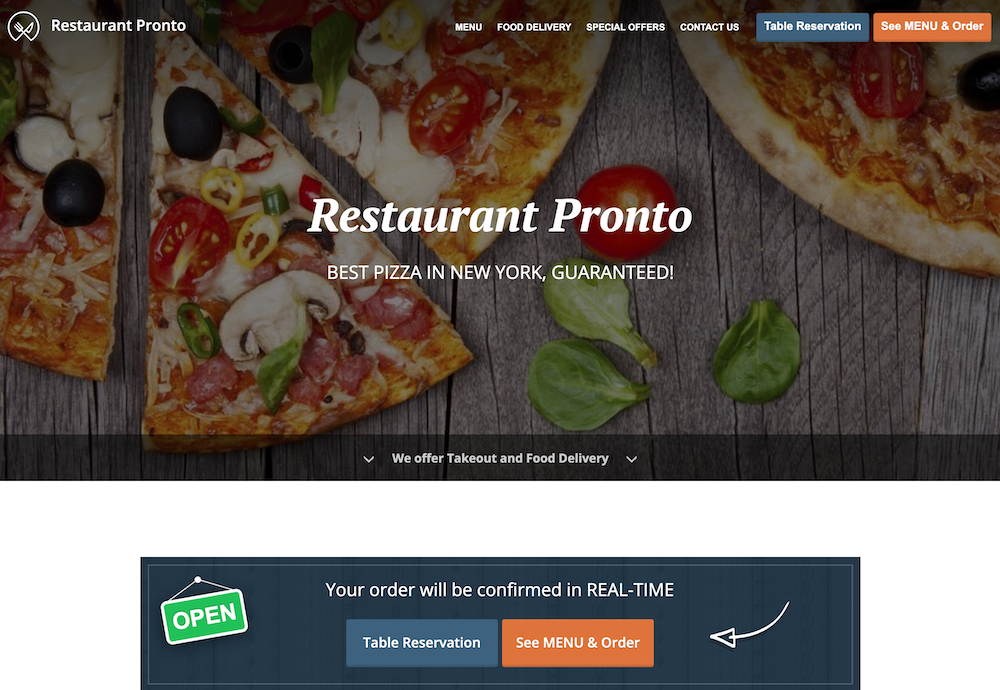As a restaurant owner, staying updated and adapting to the latest industry trends is crucial. Your top priority should be maintaining relevance and meeting customers’ evolving needs. This is essential for ensuring long-term success and sustained growth.
If you feel like your restaurant is slowly losing touch with your target audience, then a rebranding may be overdue.
This article will delve into the key steps for successfully rebranding your restaurant without losing brand recognition.
What Is a Restaurant Rebranding?
A restaurant rebranding involves making significant changes to your restaurant’s brand identity, including its name, logo, design, menu, ambiance, and overall marketing strategy.
It involves a shift in your restaurant’s positioning, values, and personality to better align with current trends or customer preferences.
Restaurant Rebranding: A 5-Step Guide
1. Analyze your target audience
Since you’ve decided to undergo a rebrand, the assumption is that something has changed. You might have decided to offer more products or want to expand your market. Or maybe you just think your restaurant brand image is outdated.
Whatever the reason for the rebranding efforts, you must analyze your target audience. Delve into your customers’ demographics, preferences, and behaviors to ensure any changes in your image will resonate with them in the first place.
You can send out surveys and ask your existing customers about their preferences, likes, dislikes, and suggestions on your rebranding.
If you plan to expand your customer base to include other demographics, send surveys to them, too. The more detailed your questions, the better.
Examples of questions you can ask include whether your current logo appeals to them or if the restaurant slogan is catchy enough.
You can distribute the surveys through email, on social media, or even in person at the restaurant.
By identifying your target audience’s specific needs and desires, you can ensure that your restaurant rebranding efforts ultimately resonate with them.
2. Evaluate your competitors and conduct a SWOT analysis
In a highly competitive industry, keeping an eye on competitors is vital, even when you’re rebranding.
You’ll want to analyze the strategies and positioning of rival modern restaurants that are successful in attracting your target audience. This way, you can incorporate them into your rebranding plan as well.
Suggested reading: How to Write a Comprehensive Restaurant Strategic Plan
Conduct a SWOT analysis to measure your business’s strengths, weaknesses, possible opportunities, and potential threats that other restaurants may pose.
Identify strengths
Assess what makes your restaurant unique and appealing to customers. This could be exceptional cuisine, your location, a loyal customer base, or a strong brand reputation.
Analyze your restaurant’s core competencies, such as skilled staff, excellent customer service, or innovative menu offerings.
Determine weaknesses
Identify and evaluate areas that need improvement or have been receiving negative feedback, such as slow service, outdated decor, or inconsistent food quality.
Look into operational challenges, financial constraints, or other internal issues that could hinder rebranding. Identify gaps in the current branding or customer perception that need addressing.
Explore opportunities
Research market trends and identify new opportunities that align with your restaurant’s strengths. For example, if there is a growing demand for healthy dining options, you can explore menu adjustments to cater to such a trend.
You may also consider expanding to new locations or introducing additional revenue streams like takeaway services.
Recognize threats
Analyze the competitive landscape and identify direct and indirect competitors that could impact your restaurant’s success. Consider external factors such as changes in consumer behavior, economic conditions, or regulatory challenges that may affect the restaurant.
You can also invest in generative AI, which can help suggest innovative ideas to put you ahead of the competition and on top of customer needs.
By analyzing data from customer feedback, market trends, industry reports, and historical product information, AI can generate new and creative product ideas that align with your customer preferences and market demands.
It can also identify emerging trends, pain points, and customer preferences. This can help you understand what features or improvements customers are looking for in your products and services.
3. Get your staff on board
A successful restaurant rebranding relies on the support and enthusiasm of the staff. Before implementing any changes, ensure your team understands the reasons for rebranding and its potential benefits.
When Starbucks revamped its logo and store design, for instance, it involved its employees in focus groups, instilling a sense of ownership and pride in the rebranded identity.
Encourage restaurant staff involvement in the process. You can even ask them for suggestions. Urge them to share their opinions about the brand’s image and how it can be improved. This will make your staff feel valued and invested in the restaurant’s success.
4. Refresh your visual identity
Now it’s time to update the visual identity of your restaurant. The visual identity of a business includes elements such as a logo, menu, and even your website.
Although you’re rebranding, the goal is still to maintain some level of continuity with the existing brand while introducing some changes. You wouldn’t want your restaurant image to become unrecognizable, after all.
A successful visual refresh will ensure customers still recognize the restaurant while perceiving it as a more updated version.
If you decide to change your name completely, retain at least some of your more recognizable visual elements like your color palette and font, for example.
5. Prioritize marketing after rebranding
Once you are done rebranding your restaurant, it is essential that you effectively communicate these changes to your customers and target audience. All your rebranding efforts will be pointless without promotion.
Post about the rebrand on your website, where you will have to update brand elements like name, logo, font, and colors.
If you don’t have a restaurant website yet, check out this video to learn how to generate one in under ten minutes:

Next, announce the rebranding on all your social media platforms to generate buzz and pique your customers’ curiosity.
You can also send email blasts to your existing customers to take them through your new look and the reason for rebranding. Leverage email finder software to learn how to get in touch with media contacts or brands that can help you spread the news faster.
In Closing
Restaurant rebranding is a powerful tool that, when executed thoughtfully, can breathe new life into a dining establishment and attract a broader customer base. Once you’ve decided you need a rebrand, just follow the steps above.
Analyze your target audience and competitors, get your staff on board, refresh your visual identity, and prioritize the marketing of your completed rebranding.
Remember, the process of restaurant rebranding should be driven by a deep understanding of what your customers want and a willingness to adapt to the evolving market.
Tailor your approach to fit your restaurant’s unique personality as well, and watch your reimagined restaurant thrive in the hearts of old and new customers alike.
This article is a guest post.
Author bio:
David Campbell is a digital marketing specialist at Ramp Ventures. He helps manage the content marketing team at Right Inbox. When he’s not working, he enjoys traveling and trying to learn Spanish.


